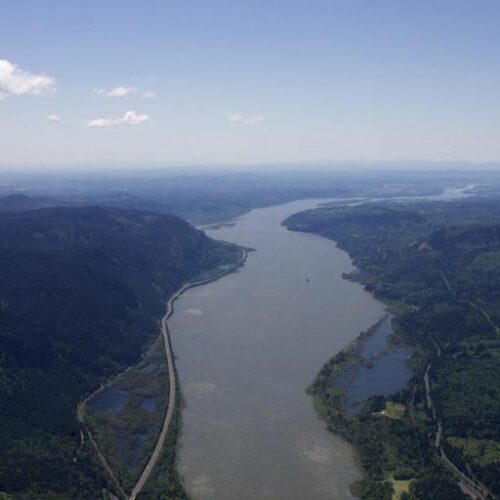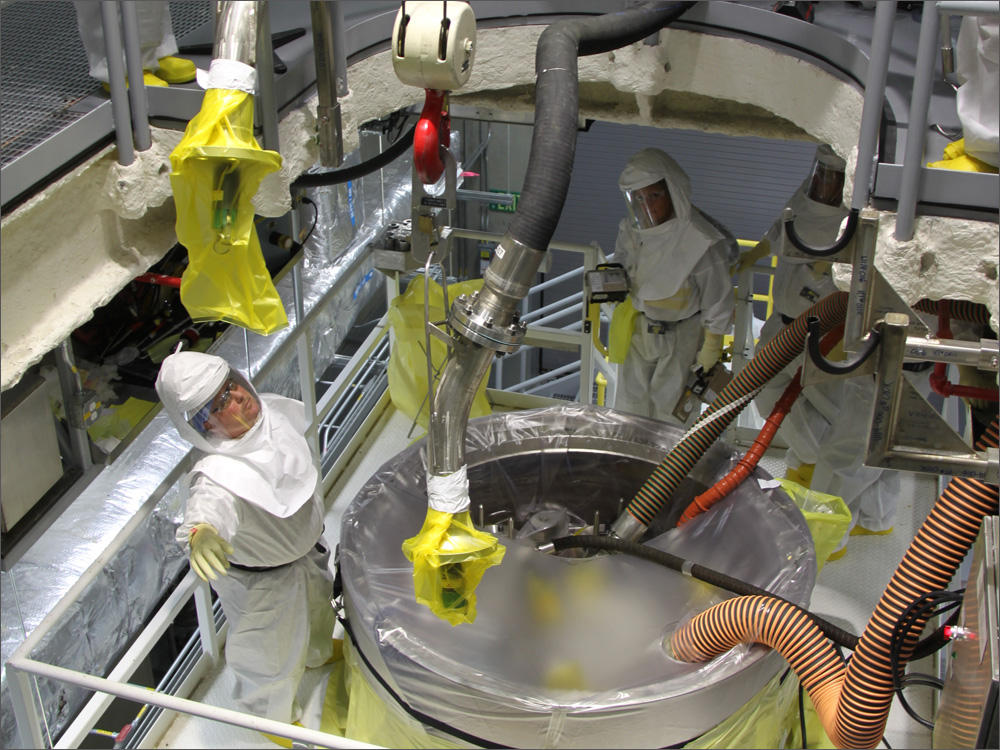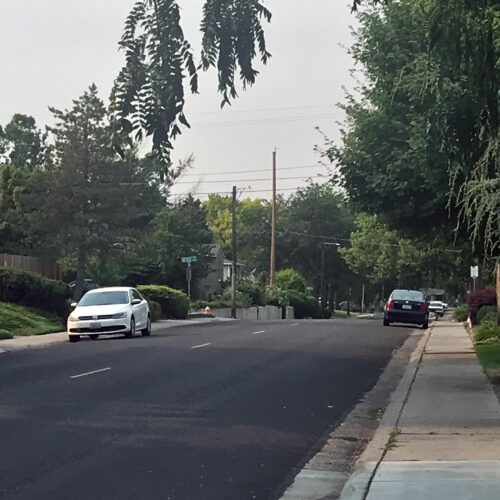
Workers Set To Empty Hanford’s Infamous K-Basin Of Radioactive Sludge
Listen
Workers plan to tackle some of the nastiest waste on the massive Hanford cleanup site next month. The so-called K-Basin holds sandy, explosive, potentially flammable and highly-radioactive sludge stored in six large containers.
The sludge is in an aging concrete basin full of water only 400 yards from the Columbia River. Workers have practiced sucking fake sludge out of the basin through special-shielded hoses into stainless steel containers on truck trailers.
Rod Lobos is the lead watchdog for the federal Environmental Protection Agency on the project.
“It’s probably one of the bigger risks to the river, just because of the proximity. It is very close,” he said. “So, removing the sludge from K Basins and moving it to the Central Plateau really reduces the risk to the river.”
If the sludge is exposed to air it will catch fire, so everything to retrieve it has to be done carefully underwater. The sludge is highly abrasive, highly radioactive and very dense so it’s difficult to pump and work with.
In a statement, Department of Energy Richland Operations Office Manager Doug Shoop said:
“Our top priority is safety as we remove this highly contaminated sludge from the basin near the Columbia River. The sludge is some of the most hazardous material at Hanford, so moving it away from the river to safe storage in a robust engineered facility in the center of the site significantly reduces risk. The mockup at the Maintenance and Storage Facility, where we tested all of the equipment and processes that will be used to remove the sludge, was critical to the preparations that have brought us to this point. The contractor’s operational readiness review provided valuable insight and lessons that will help us focus on safety, and the Department began its own readiness review this week that will afford us an additional opportunity to ensure we are ready to begin removal and transfer of the sludge.”
The two K-Basins were originally built for a 20-year mission. They were already beyond their life span when the leftover uranium rods were placed in them decades ago. The canistered sludge will be trucked about 12 miles across Hanford to a building called the T Plant for temporary storage, until the federal government decides how best to treat and where to ultimately store this waste.
This radioactive sludge is what’s left of 100,000 uranium fuel rods left to corrode after the Cold War ended.

Workers step through procedures in the 100 K Reactor Area in preparation for the DOE Operational Readiness Review. CREDIT: U.S. DEPARTMENT OF ENERGY
Copyright 2018 Northwest News Network
Related Stories:

Boom Town: New Northwest-made podcast explores Western uranium mining and Hanford downwinders
Creator and host Alec Cowan’s shadow during a tour of the Sunday Mine Complex, a complex of five uranium mines in the Big Gypsum Valley near Paradox, Colorado, on Feb.

Preliminary agreement reached for a modernized Columbia River Treaty
The Columbia River west of the Gorge as it heads toward Portland and out to the Pacific Ocean. (Credit: Amelia Templeton / OPB) Listen (Runtime 1:01) Read After more than

‘The water’s nice today’: One man’s quest to jump in the Columbia River for 25 years
For the past 25 years, Greg Patton has spent at least a few moments each month jumping in the Columbia River. (Credit: Courtney Flatt / Northwest News Network) Listen (Runtime















